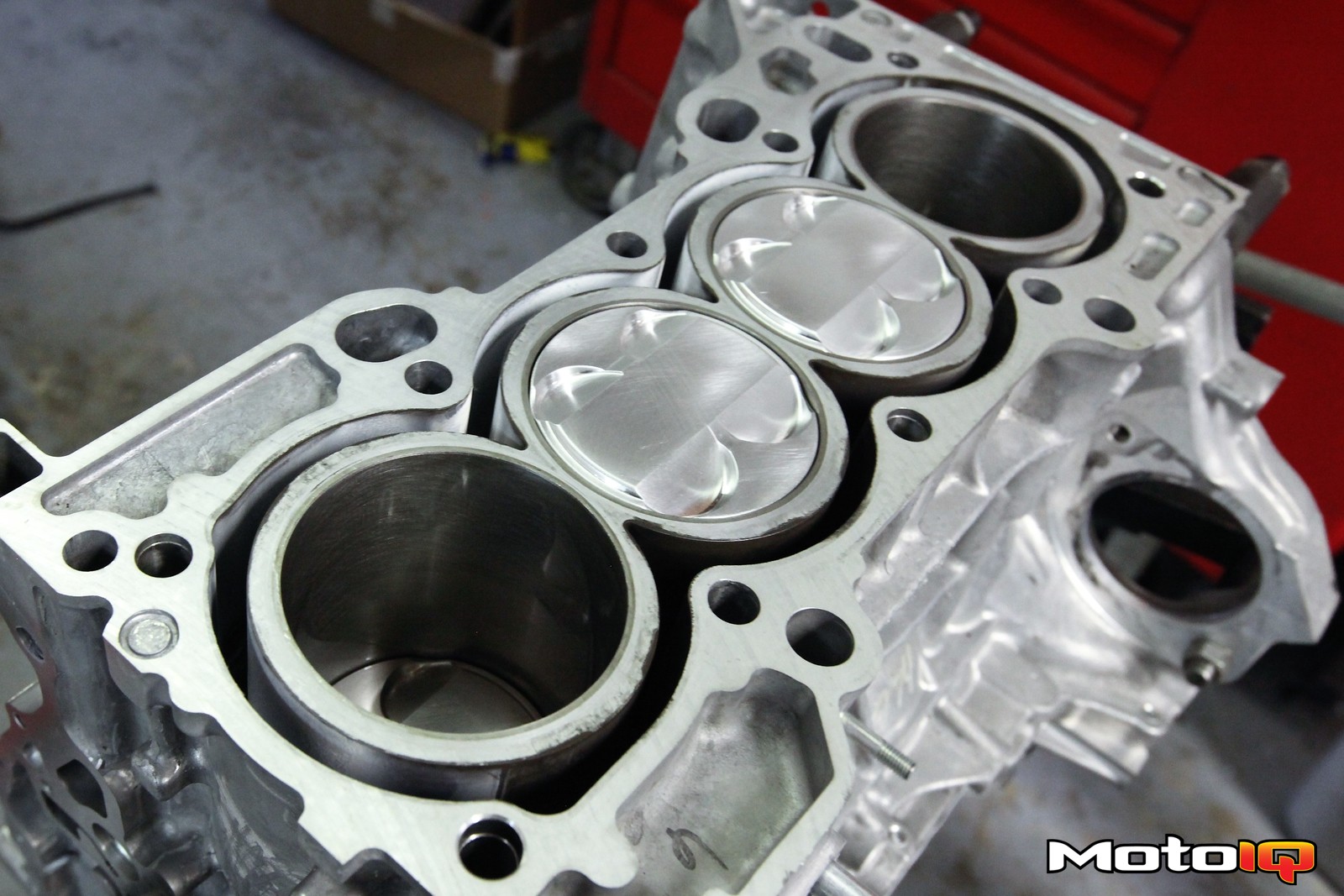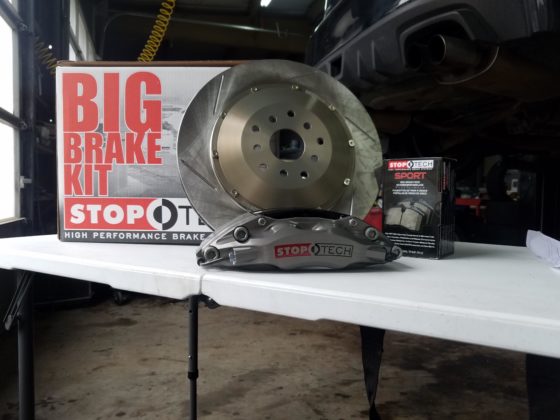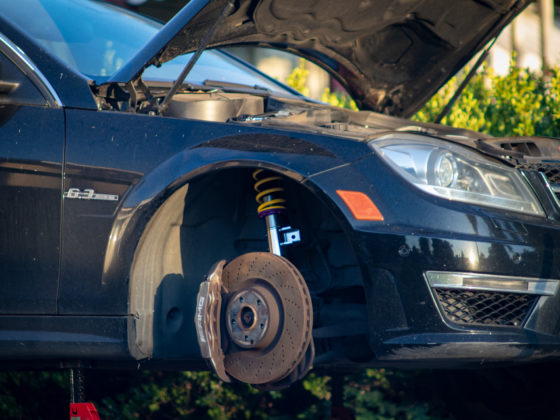
Our engine could use a lightweight flywheel and we selected a McLeod Tuner Series Aluminum flywheel part number 565004 to complement our engine. The flywheel weighs about 9 lbs and is machined from 6061 T6 aluminum with a 1045 hardened steel ring gear bolted in place.

The McLeod flywheels has a replaceable steel friction face and is SFI approved for safety certification. The flywheel saves about 14 lbs of rotating weight and will free up a lot of horsepower that is wasted trying to accelerate the heavy iron stock flywheel.

We used a McLeod Street Elite clutch part number 762061 for our engine. It is recommended for engines with 50-70% more than stock, about what our new engine should be doing. The clutch kit comes with a new pilot bushing, a throwout bearing and a clutch alignment tool.

The Street Elite disc uses a carbon/organic friction material bonded and riveted to a steel backing for improved heat resistance and burst strength over the stock disc. It has a marcel spring to help smooth engagement and a sprung hub to reduce driveline shock. These features make for a disc that can take more power than stock while still being very smooth in day to day driving.

The McLeod Street Elite pressure plate has a much higher clamping force than stock but a good leverage ratio for the diaphragm spring so the pedal effort can still stay low. This combination of parts can hold a lot more power than stock and take much more abuse but is still perfectly streetable for daily driving.
Stay tuned in the next edition of Pump Gas K Motor, we will get into the top end, most importantly the heart of any high-performance engine, the head!
For more on our Project DC5 RSX check out here!




6 comments
Hoping to do the same k24/k20 soon. Looking forward to the rest of the build!
Just wondering something: Why do you always choose the K24 bottom end in the states? Is that just for the longer stroke and therefore more displacement?
Assuming a K20 bottom end is the same, why not build a K24 bottom, with K20 bottom internals and longer conrods? (because the deck height is 19,5mm taller on the K24 engine). Smoother running and more RPM potential? Redline should theorectically be around 12000 RPM that way, and smoother running because of the smaller stroke? Sure, you loose a bit of torque that way, but you would gain top end power if you use the RPM potential with a high duration cam.
Or am i not seeing something here?
You make good points here, but I think in a street engine, spinning to 12k rpm is not feasible. If you can make more power at a lower rev range, and still have the ability to make power at 8000rpm why bother?
Meh, depends on how you build something. I had a pet project that was stolen years back: A-series engine. The BMC/Rover/Austin/Morris/MG one.
Long story short: 1046cc OHV engine (designed with 3 crank bearings in the late 1930’s as a generator on the back of a tank), capable of 12.000RPM (Normal is about 5500 RPM) Stil normally drivable. Even legal to drive with emissions here in Europe. Idled at 800 RPM without being overly lumpy. Although I must admit that it was running on BP Ultimate 102 RON.
In a way its compairable to an S2000. Just a regular engine down low until it wakes up once past 4500 RPM really. My point being: RPM limit at which an engine makes power does not neccesarily mean it’s a mut down low. Its just a different mindset when driving it. It isn’t as lazy driving as a bigger displacement engine though. So it would be feasable, but the biggest concern is going to be to find hypereutectic pistons that can handle the stress. Forged aluminum just expands to much. You either get a pinching engine op high, or burning oil if the engine is starting up.
And to answer your question: For me its always the challenge of building it. But it is a lot harder to do it right once you start using it in day to day life.
How much was this k20 Engine built $$$
JE piston makes nice products but their website is not one of them, it’s top notch web design from 1998 and filled with outdated/missing information.
I learned through e-bay that they now make coated asymmetrical pistons for BPs because JEs website still lists that piston as an uncoated round skirt.